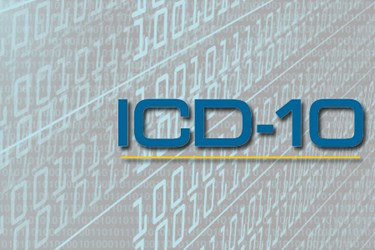ICD-10 Delays, ICD-11, And What Clients Want From VARs
By Megan Williams, contributing writer

You’ve likely heard the noise around the U.S. transition from ICD-9 to ICD-10 — most of it centered on the five-fold increase in the number of codes. However, it’s also been criticized as being a headache for CIOs and for being too granular — sometimes to the point of humor.
Preparation concerns though, are no laughing matter, leaving providers wondering if they’ve wasted time, energy and resources bracing for a deadline that has been extended to October 1, 2015. The industry was already wondering what to expect with ICD-10 and the extension has created even more questions.
How Does The ICD-10-CM Diagnosis Code Set Differ From The Previous Version?
The government has provided multiple resources for outlining the differences between the two code sets, but here are some of the highlights:
- The code set has been expanded from five to seven positions.
- As of the latest version, there are 68,000 existing codes, as opposed to the 13,000 in ICD-9.
- ICD-10 provides greater specificity that its predecessor — much more information can be conveyed in one code.
- The terminology used has been modernized and standardized.
- Some codes reflect both diagnoses and symptoms, meaning that in some cases, fewer codes are needed to describe a condition.
These changes are relatively straightforward, but problems still exist. One of the most pressing is that there is no clear mapping between the two versions. One-to-one conversions exist, but there are also many one-to-many, many-to-many, and many-to-one correspondences, as well as some codes that don’t map at all.
What Has The Delay Cost?
Chaos was initially expected before Congress announced a transition deadline extension to October 1, 2015. Hospitals, physicians, billers and coders simply weren’t prepared. Since the extension though, new causes for concern have arisen, one of which, being knowledge lost in the months of preparation organizations had undergone in getting ready for the earlier date (including coordinated volunteer testing with CMS).
Chief Medical Officer Michael Sherling, M.D., co-founder of Modernizing Medicine, Inc., a leading provider of cloud-based EMR systems, warns that doctors needs to start preparing themselves now. “ICD-10 isn’t a compliance issue like Meaningful Use in which you receive a penalty if you don’t comply, instead it is a matter of business and revenue. If you don’t have the right billing codes, you simply won’t get paid.”
How Can Your Clients Prepare?
Complaints that there is no clear path of preparation for ICD-10, and that healthcare entities have been left to figure things out on their own have been common. In response, CMS maintains the site Roadto10, which includes a breakdown of differences between the two coding systems, a list of likely benefits physicians should see from making the change, as well as a template library for vendors and physicians, and interactive sample action plan.
Should We Just Skip To ICD-11?
The U.S. is already almost a decade behind the rest of the world in converting to ICD-10, so for many practitioners, it may seem logical to simply skip over the 10th revision and head straight for the 11th (the final version will be released in 2017). This though, is a mistake. According to Sue Bowman, director of coding policy and compliance for the American Health Information Management Association: “ICD-10 is the pathway to ICD-11…You have to treat it like you’re building a structure starting with a first floor. You can’t build a fourth one without constructing a second and third.”
Solutions providers should stay alert though, as the transition will mean healthcare clients will be looking for increased awareness and standards on their part. CMIO Industry News offers advice to healthcare providers to facilitate working with a solutions provider on the transition, including having a clear understanding of what is included in your contract, developing a plan and timeline for implementation, understanding the solutions provider’s role in training and support, and communicating the need for new software or infrastructure. The list of advice, first offered a few years ago, also says to ask a question that continues to be relevant: “How will it work with both ICD-9 and ICD-10 codes?”
